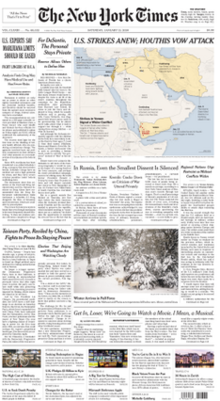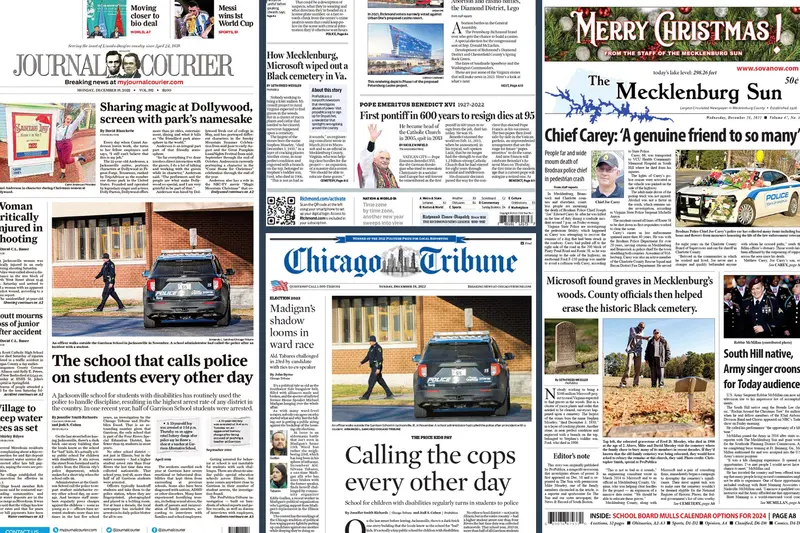News Articles Things To Know Before You Get This
News Articles Things To Know Before You Get This
Blog Article
Our News Articles Ideas
Table of Contents7 Simple Techniques For News ArticlesFascination About News ArticlesThe smart Trick of News Articles That Nobody is DiscussingNews Articles - The FactsSome Known Details About News Articles
Great knowledge of different subjects gives pupils a competitive side over their peers. Despite the fact that digital and social networks are readily easily accessible, we ought to not neglect how vital it is to check out the papers. Parents need to try and inculcate the behavior of reading a paper as a day-to-day routine to proceed the legacy of the revered print tool.News stories likewise have at the very least one of the following essential attributes family member to the desired target market: closeness, prestige, timeliness, human passion, quirk, or consequence.
Within these limitations, newspaper article likewise aim to be extensive. However, other elements are involved, some stylistic and some derived from the media form. Amongst the bigger and extra respected papers, justness and equilibrium is a major consider offering details. Discourse is normally restricted to a separate section, though each paper might have a various general slant.
Newspapers with a global audience, for instance, tend to make use of a much more official design of writing. News Articles.; common design overviews include the and the United States News Design Book.
News Articles - Questions
Generally, journalists will not use a long word when a short one will certainly do. They make use of subject-verb-object construction and vibrant, energetic prose (see Grammar). They supply anecdotes, examples and metaphors, and they hardly ever depend on generalizations or abstract ideas. Information writers try to avoid using the exact same word greater than when in a paragraph (occasionally called an "resemble" or "word mirror").
However, headings often leave out the topic (e.g., "Leaps From Watercraft, Catches in Wheel") or verb (e.g., "Feline woman fortunate"). A subhead (also subhed, sub-headline, subheading, caption, deck or dek) can be either a subservient title under the primary headline, or the heading of a subsection of the article. It is a heading that precedes the major text, or a group of paragraphs of the major message.

Extra billboards of any of these kinds might show up later in the article (specifically on subsequent web pages) to lure further analysis. Such billboards are additionally utilized as pointers to the post in other areas of the publication or website, or as advertisements for the item in other publication or sites. Normal structure with title, lead paragraph (recap in bold), various other paragraphs (information) and get in touch with details.

Instance of a hard-lead paragraph NASA is recommending an additional area job. The company's budget plan request, announced today, consisted of useful link a plan to send an additional goal to the Moon. This time the firm wants to develop a long-lasting facility as a jumping-off point for other room journeys. The spending plan requests approximately $10 billion for the project.
The NASA statement came as the agency requested $10 billion of appropriations for the task. An "off-lead" is the second crucial front web page news of the day. The off-lead appears either in the visit homepage leading left corner, or directly listed below the lead on the. To "bury the lead" is to start the post with background details or details of secondary value to the visitors, compeling them to check out more deeply right into a short article than they should need to in order to find the essential factors.
The Best Guide To News Articles
Typical use is that or 2 sentences each form their very own paragraph. Reporters generally describe the organization or framework of an information tale as an upside down pyramid. The vital and most intriguing components of a story are put at the beginning, with supporting info complying with in order click reference of reducing importance.
It allows people to explore a topic to only the depth that their interest takes them, and without the imposition of details or nuances that they might think about unnecessary, yet still making that details readily available to more interested readers. The inverted pyramid framework additionally enables articles to be cut to any kind of approximate size throughout design, to fit in the space available.
Some writers begin their stories with the "1-2-3 lead", yet there are numerous type of lead available. This style invariably begins with a "Five Ws" opening paragraph (as explained above), followed by an indirect quote that serves to sustain a significant aspect of the very first paragraph, and after that a straight quote to support the indirect quote. [] A kicker can describe several things: The last tale current program; a "pleased" story to finish the program.
Longer write-ups, such as publication cover short articles and the items that lead the within sections of a paper, are called. Feature tales differ from straight information in a number of ways. Foremost is the lack of a straight-news lead, the majority of the moment. Rather than providing the significance of a story in advance, function writers might attempt to draw visitors in.
The News Articles Ideas
A feature's very first paragraphs commonly connect a fascinating moment or event, as in an "anecdotal lead". From the particulars of a person or episode, its view quickly broadens to generalities regarding the story's subject.

The Editor's Toolbox: A Reference Overview for Beginners and Professionals (2001) Allan M. Siegal and William G. Connolly. The New York Times Guidebook of Style and Use: The Official Design Overview Utilized by the Writers and Editors of the World's Many Reliable Newspaper (2002) M. L. Stein, Susan Paterno, and R.
Report this page